Cette publication est également disponible en :
Français
Often used to conjure up an ocean feel, salty notes have the distinctive characteristic of being primarily rooted in the sense of taste. An overview of the specific physiological and chemical features of these notes and their olfactory interpretation, as seen through the eyes of Aliénor Massenet (Symrise) and Cécile Matton (Mane).
When asked, perfumers tend to describe salty notes as “mineral, ozone, aquatic, sea spray, marine,” as summed up by Cécile Matton from Mane. Aliénor Massenet from Symrise adds a further explanation: “It’s hard to think of saltiness in terms other than ocean notes in perfumery, because it is rooted in taste and not strictly speaking in the sense of smell.” However, the ingredients that we describe as salty differ according to our culinary culture: while coconut is classified as sweet in the West and associated with the beach and deserts, it has totally different connotations on the Asian market, for example, where it is used in savoury cooking.
Since defining what salty notes can be seems complex at first, it is useful to look at the physiological and chemical attributes of salt to get a better understanding of what we’re talking about.
Physiological profile
In the chemical sense of the term, a salt is a crystal, generally soluble in water, formed by the combination of an element with a positive charge (cation) and another with a negative charge (anion). What we call “salt” in everyday language and which we use in cooking is sodium chloride (NaCl), a combination of sodium (Na) and chlorine (Cl), although it is sometimes mixed with other salts such as magnesium chloride. Known since time immemorial for its preservative properties and its power to enhance taste – “as colours need light, so foods need salt to excite the sense of taste”, wrote Plutarch[1]Plutarch, Table-Talk, IV. – it has long been used as a currency, giving us the word “salary” (salarium meant salt distributed as an allowance to the centurions), and been taxed – with the gabelle – in the Middle Ages and the modern era: in short, salt is part and parcel of the history of humanity.
A distinction can be made between sea salt, which comes from salt marshes (such as Guérande salt), and rock salt, which comes from mines resulting from the presence of oceans hundreds of millions of years ago (like the pink salt of the Himalayas, which owes its colour to the iron it contains).
Whatever its origin, salt is imperceptible to the nose, while still being defined as a flavour enhancer. It does stimulate the salivary glands. However, thanks to its electrical charges, it primarily causes volatile odour molecules to leak into the back of our throats, sending them through the retronasal pathway to our olfactory receptors. Salt thus gives us a better perception not of the taste of food, but of its aroma, which is not very soluble in aqueous media like our saliva. Our sense of smell, which enables us to capture these aromas retronasally, accounts for 80% of our perception of food thanks to its 400 different types of olfactory receptors. However, salt does not only amplify our perception of taste: it can also reduce the sensation of bitterness and, in high doses, of sweetness. It is worth noting that our sense of taste allows us to perceive mainly (but not exclusively) five so-called primary flavours: saltiness, sweetness, sourness, bitterness and umami (meaning “savoury taste”, identified by Kikunae Ikeda in 1908 and known empirically long before that). Umami can equally be perceived as salty, albeit with an organic rather than a mineral saltiness, mainly expressed by sodium glutamate. Saltiness can additionally be attributed to compounds other than sodium chloride, but it is then generally perceived as unpleasant, with a bitter aftertaste. Fun fact: the idea that the receptors for specific tastes are located in specific parts of the tongue is completely false, the result of an error in the translation of a scientific article!
Finally, a salty taste is perceived thanks to the ENaC (Epithelial sodium channel) ion channel present in the membrane of taste cells. It is, however, possible that other types of specific detectors exist but have not yet been discovered: saltiness is still far from having revealed all its secrets to researchers.
Iodised sea spray
Although it seems obvious to us today, the idea of odourless salt has not always held sway. In the 18th century, for example, people visiting the salt marshes attributed a very specific scent to it, as anthropologist Laurence Hérault writes: “The various authors agree on the description of the odour: freshly harvested salt supposedly smelled of violets, or at least of a floral perfume, as some writers also evoked the scent of the Florence iris.”[2] Laurence Hérault. L’odeur du sel [The smell of salt] Fabre–Vassas C. and Musset D. Odeurs et parfums, Comité des Travaux Historiques et Scientifiques (CTHS), pp.191–200, 1999. This smell may be due to the magnesium compounds that accompany the salt before it is purified. But the olfactory characterisation of the crystal disappeared in the 19th century with the development of technological devices that replaced the sense of smell as a means of measuring product quality.
Salt and violet have a shared destiny, however, because the term iodine, generally associated with the idea of saltiness, comes from the Greek ioeides, meaning “violet”: Gay Lussac gave it that particular name because of the colour of the vapours when it is heated, after it was discovered by Bernard Courtois in 1811 in seaweed ashes; seawater is in fact where it is mainly present. A trace element belonging to the halogen family, iodine is essential for humans, and its deficiency can cause thyroid problems, which explains why some table salts are enriched with it. But the perfume of sea spray is mainly due to dimethylsulphide, which is produced by the decomposition of phytoplankton, as well as to a group of molecules, the dictyopterenes, which are used by algae as a means of communication, along with bromophenol and giffordene, because “aldehydes related to the latter – which are responsible for the aquatic notes of cucumber, watermelon and melon – are also present in algae.”[3]See our article on beach scents.
A dash of materials
So how do the perfumers go about recreating this salty sensation, which is in principle a resident of the realm of taste?
Seaweed extract, available in the perfumery palette, is unsurprisingly one of the materials chosen to meet this challenge: “At Mane, we have a superb iodine, salty Jungle Essence red seaweed extract with a woody moss facet,” confirms Cécile Matton.
On the natural side, marine facets are to be found in ambergris, the intestinal secretion of the sperm whale. Once considered the white gold of perfumery, it owes its smell to a long journey through the seas, without which it cannot be used for olfactory purposes.[4]To learn more about ambergris, see our special article in Nez, the Olfactory Magazine – #07 – The Animal Sense. It has dropped out of use, however, because of its scarcity (sperm whales are less numerous than in the past), its price and the vegan trend, and is “replaced” by molecules such as Ambrox (contained in natural ambergris).
Of the artificial molecules evoking the smell of sea spray, the most famous is certainly Calone, synthesised for the first time in 1966 by three Pfizer chemists, John J. Beereboom, Donald P. Cameron and Charles R. Stephens, who discovered a compound (methylbenzodioxepinone) with the smell of “fresh, green leaves reminiscent of melon.” The company outsourced production to one of its subsidiaries specialising in aromatic ingredients, Camilli, Albert & Laloue (C. A. L.), hence the name ‘CALone’.[5] For more information on Calone, see Nez, The Olfactory Magazine – #05 – Natural and Synthetics. Added to its facets of water fruit and sea spray are aniseed and oily notes, and is has a very powerful olfactory impact: “we use it mainly as a facet, rarely as an overdose; when you add too much of it to a formula, it can create a nauseating metallic effect,” Cécile Matton points out. “But it’s the king of ingredients when it comes to iodine notes, which are rather limited in our palette. Natural moss, sometimes replaced by Evernyl, and certain floral notes that had a salty or wet effect, such as Helional, and Algenone with its solar amber dimension, are restricted these days. We can still use Floralozone, although it’s more aquatic than salty, and Melonal for its watery melon facets. Mane has developed various captives, like Aqual, which has expanded our palette of salty notes. As for the ambergris facet, Orcanox, a Mane upcycled molecule, is interesting because of its complexity.”
At Symrise, the palette was expanded in late 2020 with a collection called Garden Lab, which celebrates ingredients produced from vegetables: “We’re like children opening their presents at Christmas, full of enthusiasm, sometimes even really excited,” smiles Aliénor Massenet. “They are gorgeous ingredients. Asparagus can offer a new way of working on a slightly salty green note, in a similar vein to galbanum; artichokes have pinker, more floral facets; cauliflower in a gourmet composition will break up the sweetness, as Calone could do; and onions can replace slightly animal notes. These are ingredients that I use sparingly, to give contrast to the fragrance. Our customers tend to be very intrigued by these new raw materials but some of them are still nervous about using them or referring to them in their perfumes, so I use the ingredients without necessarily mentioning them. Alexandra Carlin used our cauliflower Symptrap in L’Artisan parfumeur’s Le Potager collection. It’s a perfect example that makes it easier to see the creativity the ingredients can bring; maybe it will shift the lines.”
The perfumers’ pinch of salt
Salty notes first burst onto the scene in the form of marine compositions: “It was two Mane creations, New West for Her [by Yves Tanguy for Aramis in 1990], then Escape for women [Calvin Klein, 1991], that launched the trend,” recalls Cécile Matton. “The note then went on to shape the men’s market in the long term: Kenzo pour homme [created by Christian Mathieu in 1991] was a real trailblazer, even though it’s not terribly accessible, proving that consumers can happily embrace radical innovations that offer real olfactory innovation!”
The more aquatic Eau d’Issey by Jacques Cavallier in 1992 was followed by Acqua di Gio in 1996 by Alberto Morillas, Annick Menardo and Annie Buzantian for Giorgio Armani, with an added marine focus, but very clean and polite.
The same year Reminiscence released Rem, with its unmistakable salty-amber signature, while Profumum Roma launched Acqua di sale.
In 2004, Ralf Schwieger and Nathalie Feisthauer created Eau des merveilles for Hermès, a composition based on an ambergris accord that has become a perfumery classic.
The note gradually conquered the independent brands, with an appearance in Do Son by Diptyque in 2005: “the founders had lived in Indochina and wanted a flower swaying in spray from the sea, which is how the green tuberose came about,” explains Cécile Matton.
Also worth mentioning are the 2008 Sel marin by James Heeley, bringing to mind a saunter on the dunes, between crumpled leaves and driftwood, and Aod by the Breton house Lostmarc’h with its floral, aquatic and poetic coconut feel.
In 2010, Womanity made a big splash in the mainstream perfumery market with its sweet and savoury contrast, co-created by a team at Mane that included Cécile Matton: “the brief was a memory of a moment spent by Thierry Mugler under a fig tree, lulled by the sea breeze. Serge Majoullier [perfumer and expert in developing new raw materials at Mane] had developed a caviar Jungle Essence, which made it possible to create a caviar accord. Cistus labdanum also contributes to the salty mineral effect, enriched by pyrazines to hint at rice growing in water, and forges a link with the sweetness of the fig. Finding the right balance was complicated, we spent a lot of time on it, and it was an audacious gamble,” recalls the perfumer. On the same theme, Paco Rabanne’s Olympéa followed in 2015, composed by Loc Dong, Anne Flipo and Dominique Ropion of IFF.
Perhaps more rarely, the note summons up skin’s animalistic aspect, since the sweat produced by the eccrine sweat glands tastes salty. Musc Tonkin, composed by Marc-Antoine Corticchiato for his brand Parfum d’empire in 2012, plays on this animal minerality with remarkable mastery.
A taste for something new?
Although the sugary trend is proving persistent, could saltiness have the potential to move gradually away from glucose and its sticky liqueurs? “It hasn’t yet become a standard request from clients,” notes Aliénor Massenet. “I think that salty notes are more ‘intellectual’ than sugary ones, less immediately obvious. But if you use this facet in the same way as adding a pinch of salt to a chocolate cake, you create contrast and a new form of addiction.” Despite its frugal use, salt is still very much present and has made an olfactory appearance in a host of recent launches. “It is still a very distinctive family, difficult to update, because we don’t have as many ingredients in the palette. Getting away from the classic marine notes is still a challenge,” adds Cécile Matton.
Nevertheless, a number of perfumers are looking to reinvent the genre, such as Marc-Antoine Corticchiato, who he dedicated his 2018 Acqua di Scandola, “a landscape fragrance, as surprising as the place that inspired it,” to the Corsican peninsula and nature reserve that bears the same name. “I wanted to use something other than artificial aquatic molecules to express the marine accord, because they’ve become clichéd. I found the key in a gorgeous seaweed extract,” explains the perfumer. The sea mingles with the olfactory expression of “untouched nature, conveyed by the aromatic edginess of juniper and spicy scents of immortelle” and “rocks covered in velvety moss.”
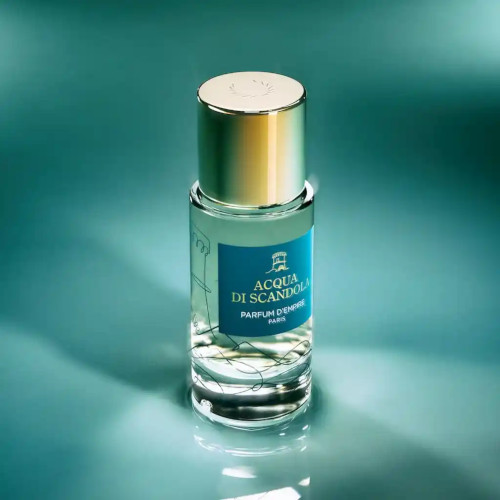
Christine Nagel was inspired by the Adriatic Sea flowing under the bridges of Venice for her first composition in the 2019 Jardins d’Hermès collection. Both floral and salty, the Jardin sur la lagune is a tapestry of memories of a place the perfumer has visited on several occasions, forming “a garden from a dream, caressing and vibrant.”
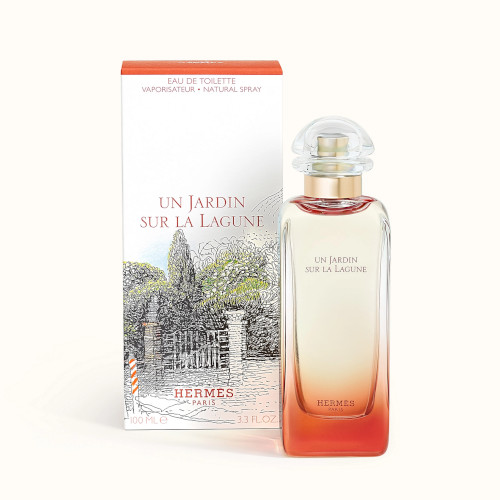
For his second perfume, Marc–Antoine Barrois took a trip to Ganymède, one of Jupiter’s satellites, “a rocky, luminous planet submerged in oceans of salty water“ and discovered by Galileo in 1610. His sidekick, perfumer Quentin Bisch, devised “a quartet of mandarin, violet, suede and immortelle,” with the last of the four serving as “a counterpoint to enhance the accord with its alternating mineral and salty facets.”
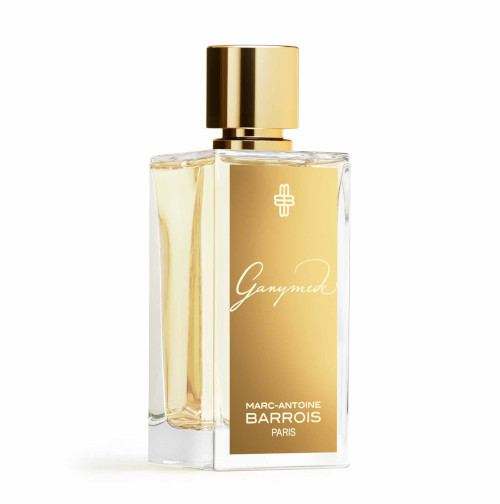
Still in 2019, Stéphanie Bakouche created Rose Saltifolia for Maison Crivelli, a fragrance that conjures the experience “of a seaside stroll, through fields of newly opened roses tossing in the ocean breezes.” The queen of flowers is “sparkling and crystal-clear” in this composition, teamed up with “a salty, silky seaweed absolute.”
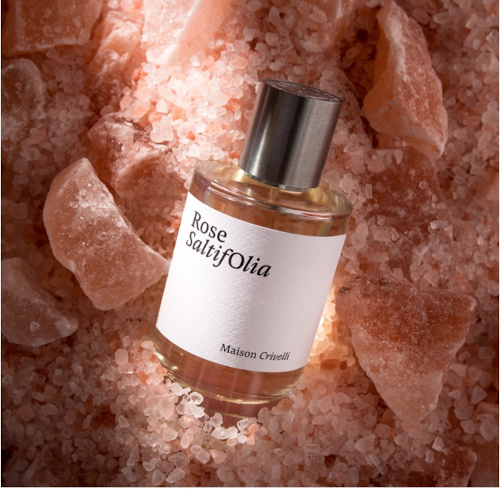
A pinch of salt also brings out gourmand ingredients, notably the vanilla in Couleur vanille released by l’Artisan parfumeur in 2020. Aliénor Massenet, who created the fragrance, had the idea of “suggesting the ocean breeze caressing the exotic pod,” she explains. “So I counterbalanced my vanilla with Calone as well as immortelle, which has a hint of saltiness alongside a spicy celery effect, and which grows at the seaside. To soften and mask the note, I used salicylate, a salty, solar molecule that is very abstract.”
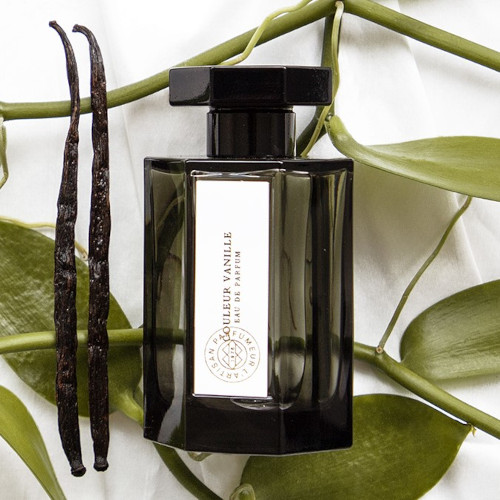
The brand Memo opted for creating an imaginary encounter with a mythical cetacean and the enchantment of whale song. Perfumer Aliénor Massenet came up with a “leather centring on the ocean and contrasting with salty notes, including a seaweed absolute that has a highly distinctive aroma, both vegetal and animal, part reptile, part tree moss, but that, in the right dose, adds a lovely signature, softened by salicylate.”
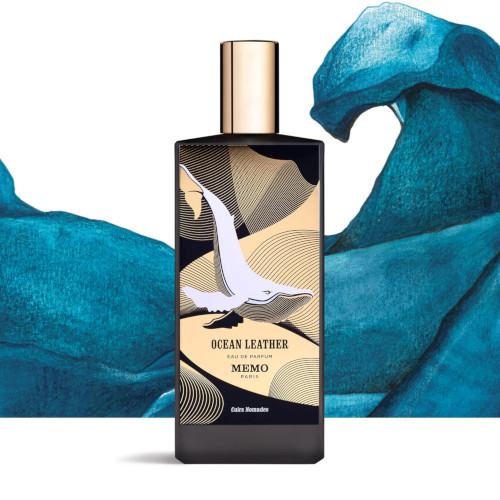
Back to Corsica again with Sel d’argent by BDK, which recounts the memory of a “late afternoon on the rocks of the Island of Beauty” with “the taste of salt still clinging to your skin.” Anne–Sophie Behaghel added in the smell of a fig tree encountered in the “fresh, transparent marine” air.
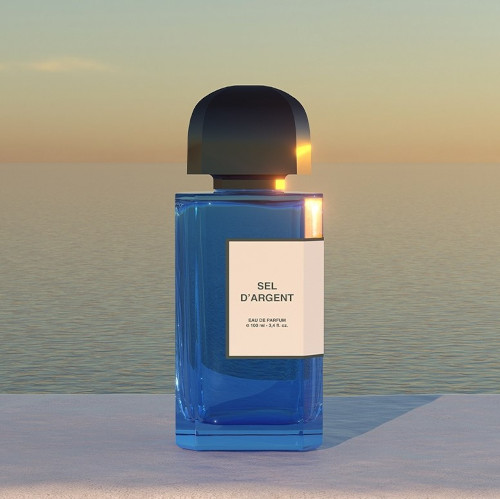
The 100% natural and organic fragrance brand Nout also stirs up memories of summer with its 2021 Sel de mer. Laure Jacquet de Robertet devised “a fruity melon [which] then sweeps you away to sea spray notes,” and onwards to a “smooth, heady soft orange blossom” laid over a woody cedar structure.
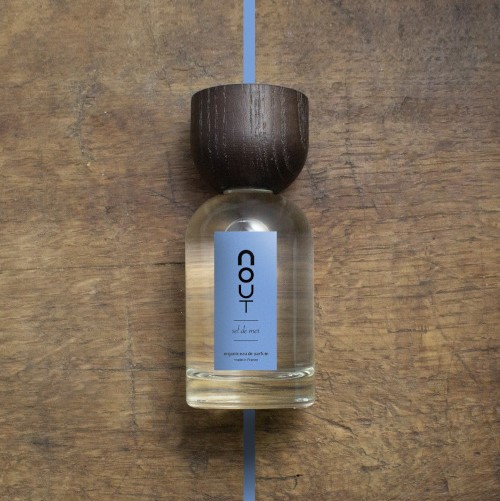
Flowers, scattered with grains of salt, also feature in Ça boum, one of the fragrances in the Expressions parfumées collection by Teo Cabanel. With this perfume, Patrice Revillard offers a “sweet and salty contrast that is bold and hypnotic, inspired by the captivating sea daffodil.”
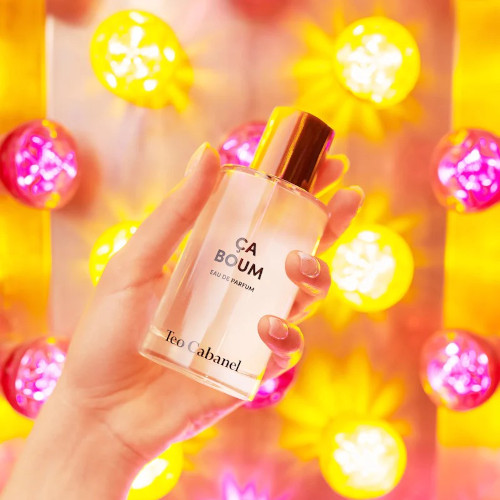
The same year, Diptyque launched a limited edition eau de toilette, Venise, part of the Grand Tour marking the brand’s 60th anniversary. “The idea was to imagine a kitchen garden in the lagoon. I worked on tomato, which is halfway between a fruit and a vegetable, and which adds a pleasurable dimension to the perfume with its juicy but unsugary character. I combined it with Mane’s Jungle Essence green pepper, which is also very juicy, smells of freshly cut vegetables, is naturally aquatic and evokes a light sea breeze,” explains Cécile Matton. A delicate creation we hope to see back in the brand’s catalogue.
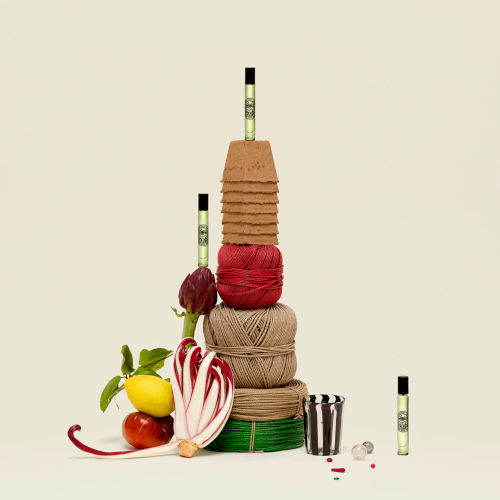
The year 2022 saw a flurry of iodine-fuelled expeditions, possibly in response to the isolation of lockdowns and a need to open the door to other places.
Liquides imaginaires takes us on a journey into the salty depths with its Eaux des Bermudes collection, comprising three fragrances that “tell the tale of a mythical and perilous sea crossing full of dangers and an adventurer who escapes them all before recounting them in perfumes.” In Abyssis, Shyamala Maisondieu from Givaudan defies the kraken armed with Calypsone, Cosmone and Sylkolide, underpinned by woody and peppery notes. Navis, by Nadège Le Garlantezec, features a boat “rich in treasures” centring on cedar, amyris and laminaria seaweed moss. Lastly, Sirenis fills our ears with “a haunting song” in a whisper of clary sage, moss and wood composed by Sonia Constant and Marion Costero.
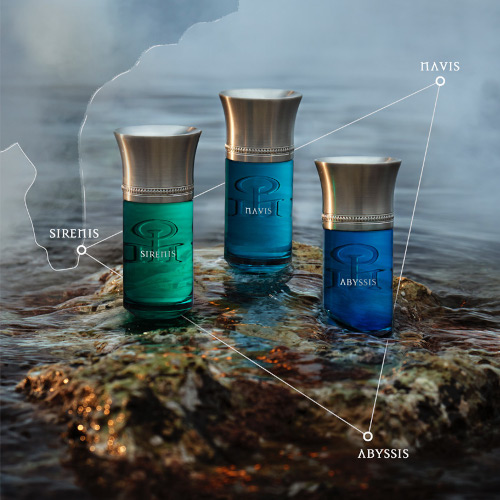
Carner Barcelona whisks us off to the Mediterranean with Sal y Limon, whose “sharp salty accord lends further depth” to the “citric and fizzy” composition built on musks and a patchouli base.
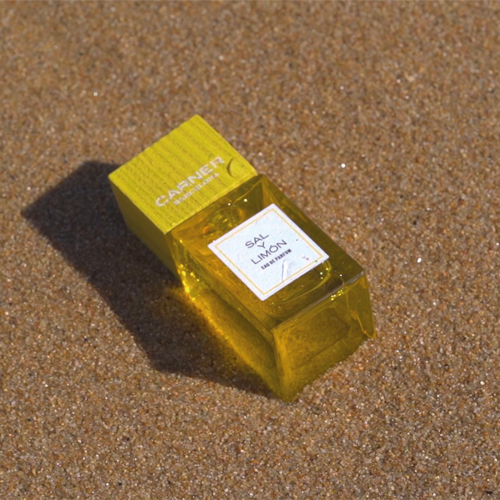
Repetto also makes use of orange blossom in its Néroli solaire, “addictive with a salty side brought out by Calone, which creates a water flowers effect,” explains Aliénor Massenet. She teamed it up with “a ballet of luminous, radiant white flowers: exotic frangipani, graceful Madagascar ylang–ylang and velvety gardenia.”
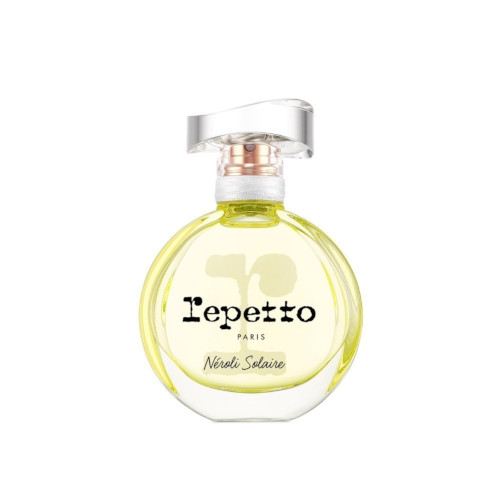
The Different Company offers another floral choreography with Dance of the dawn, an eau de parfum launched as part of the brand’s L’Esprit cologne collection, with a “woody and floral heart reinforced by a delicate vanilla” that “transports us to a faraway exotic beach.” Emilie Coppermann from Symrise added a salty touch to the driftwood accord, “evoking a stroll along the ocean’s edge, like wood dried by the sun’s rays, fossilised by sea salt, bleached by the sea air.”
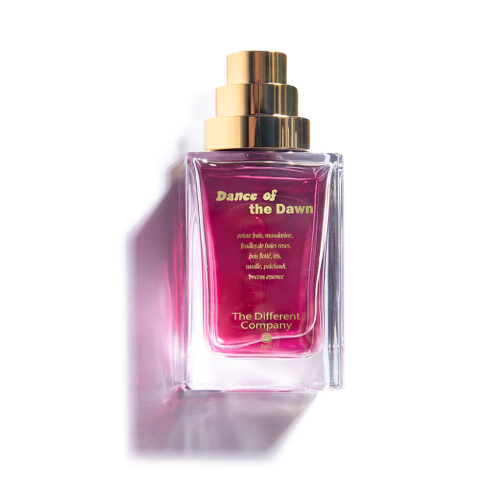
The brand Poécile, on a mission to help us rediscover the regions of France thanks to our noses, has recently released Bleu Asgard, which takes us on a journey to the coast of Brittany where we can “let ourselves be rocked by the invigorating waves of the Atlantic.” Created by Patrice Revillard, the fragrance opens with fresh iodine notes then walks a path that is both mineral and aquatic, where the seaweed absolute and ambergris and driftwood accords bubble up.
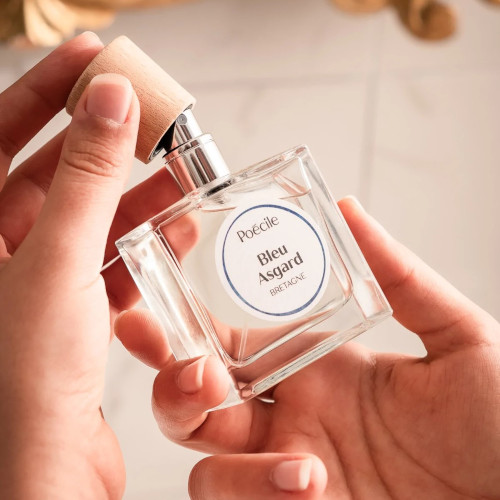
Patrice Revillard also worked on the salty note for Teo Cabanel with a limited edition fragrance (now sold out!) in collaboration with the brand Modetrotter. In Peau salée, he fuses frangipani with jasmine, the two flowers “intertwined with driftwood and tonka cream” and featuring coconut nuances. A perfume that “has a lovely holiday smell” and can be worn “all year round, to keep memories of hot summer days alive!”
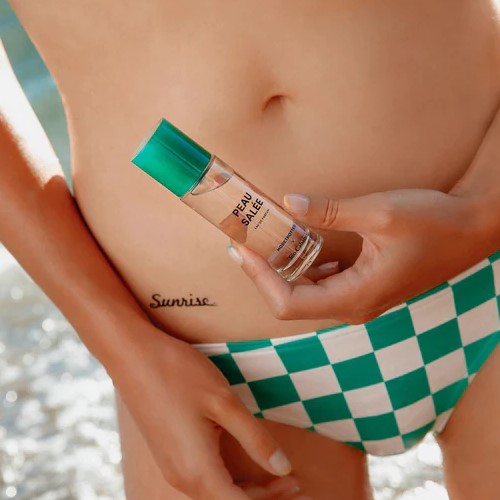
Peau salée is also the name of one of the perfume oils “with a confidential, addictive and comforting trail” from the recent brand Elaïo, based in Bordeaux, France. Perfumers Clémentine Humeau and Marie-Julie Hébert have composed “a floral, mineral and saline fragrance” with a milky, salty, sunny effect and notes of coconut, inspired “by a day at Bondi Beach, a mythical and popular Australian surf spot with a casual atmosphere.”
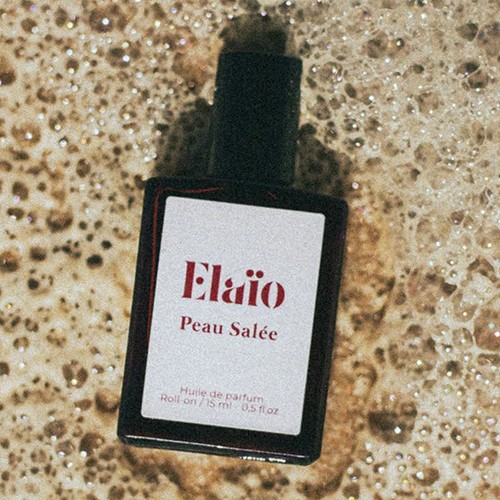
Sweetness also takes a starring role in Tonka blanc from L’Artisan parfumeur, where creamy facets are softened, surprisingly enough, by cauliflower! A creation by Alexandra Carlin from Symrise representing “the first perfume on the market to feature a natural vegetable extract,” part of Le Potager collection, its sweetness counterbalanced by citrus top notes.
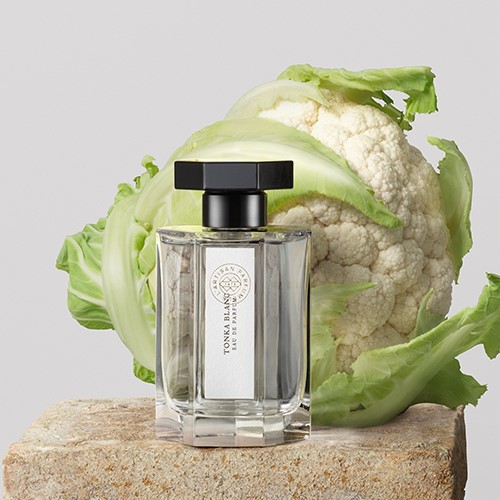
Although it is not yet commercially available, Umema, the perfume composed by Ugo Charron from Mane in collaboration with anosmic journalist Emmanuelle Dancourt, plays on the notion of salty sweetness, including via an exploration of the umami note, rarely featured in perfumery. The result is textured and creamy thanks to the choice of Suederal, Tropicalone, musks and sandalwood. Equally, it is salty and gourmand, with hazelnut and red seaweed Jungle Essence extracts teamed with a cocoa, moss, cedar and salicylate accord. While you wait for the chance to smell it for yourself, you can read all about it in our article.
And tomorrow?
We are willing to bet that, in the not too distant future, brands will look increasingly to vegetables or umami for inspiration, bringing them into line with the perfumers who want to explore new olfactory territories beyond sugar and the sea and find inspiration there. When that day comes, Cécile Matton from Mane would like to work on “the velvety taste of balsamic vinegar; I adore it’s texture, acidity and the sweet and savoury feel,” or on “a sparkling pepper aldehyde with blackcurrant notes to create a whole new green citrusy floral.” As for Aliénor Massenet, she cites a perfumery’s illustrious name: “I would love to come up with a new Jicky, by replacing the civet with onion, which we recently added to our palette at Symrise, and which has fascinating animal facets that pave the way to a new oriental.”
Plenty of mouth-watering ideas, which may finally end up drowning out the siren call of glucose.
Notes
| ↑1 | Plutarch, Table-Talk, IV. |
|---|---|
| ↑2 | Laurence Hérault. L’odeur du sel [The smell of salt] Fabre–Vassas C. and Musset D. Odeurs et parfums, Comité des Travaux Historiques et Scientifiques (CTHS), pp.191–200, 1999. |
| ↑3 | See our article on beach scents. |
| ↑4 | To learn more about ambergris, see our special article in Nez, the Olfactory Magazine – #07 – The Animal Sense. |
| ↑5 | For more information on Calone, see Nez, The Olfactory Magazine – #05 – Natural and Synthetics. |
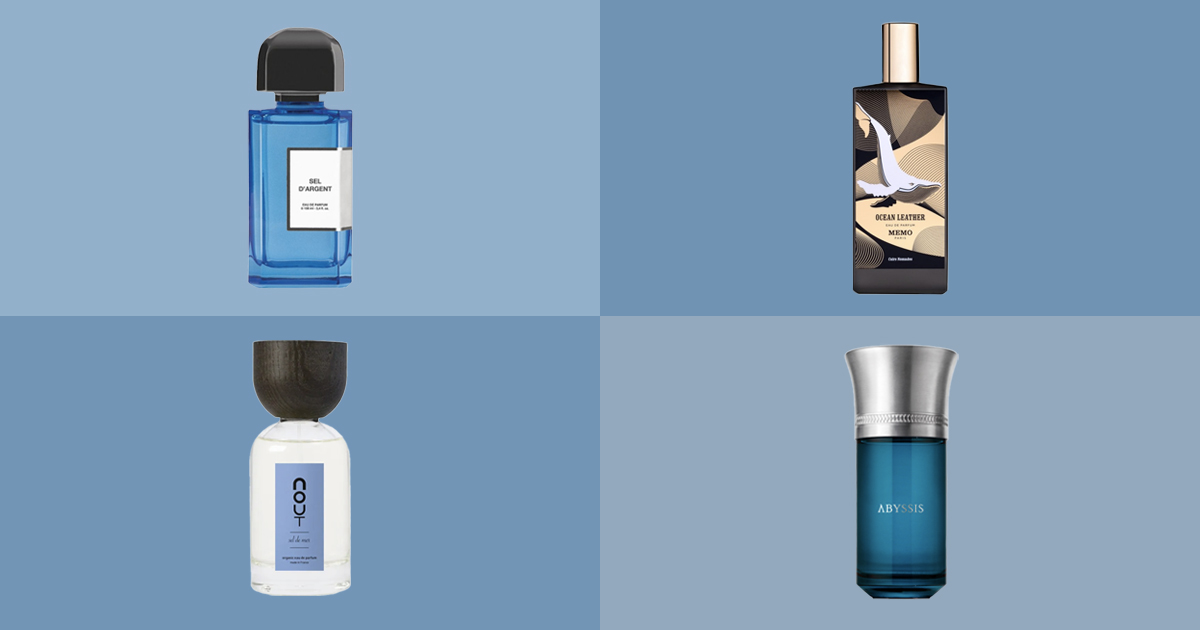







Comments